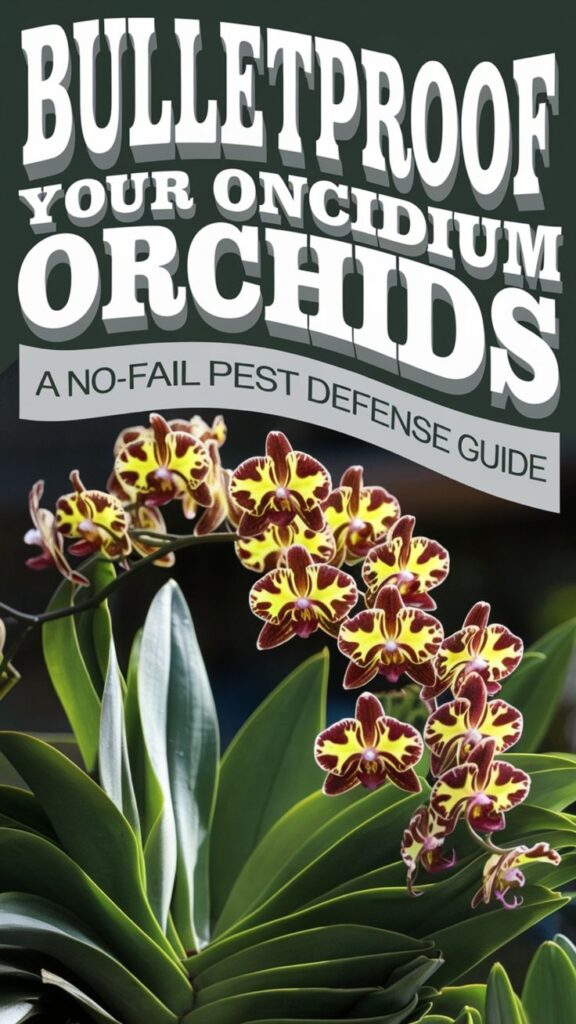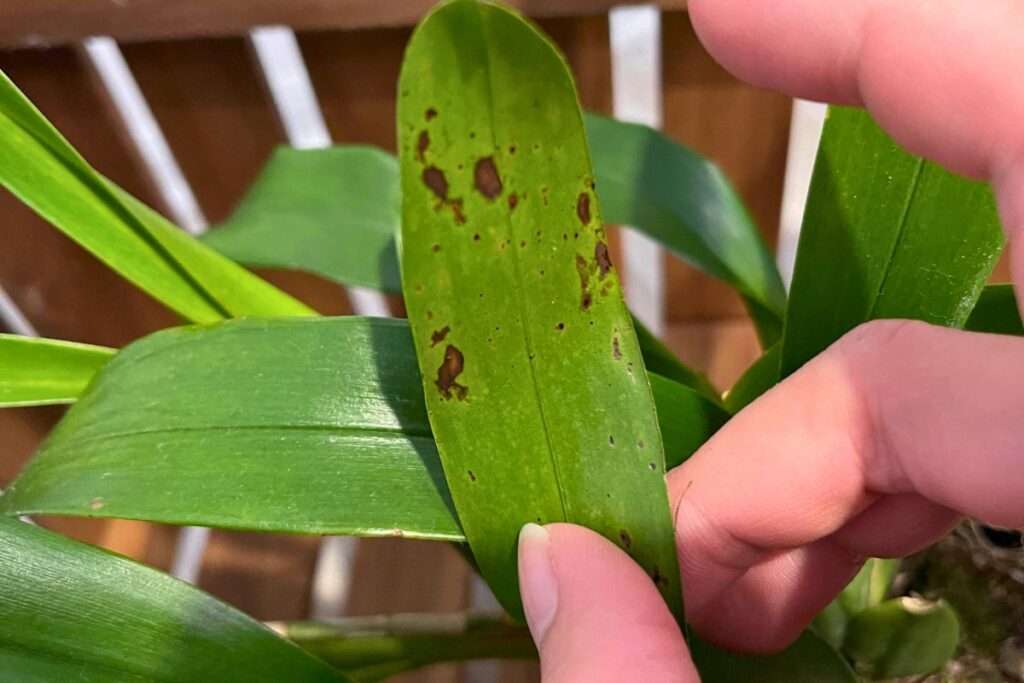If you’re growing Oncidium orchids, you’ll need to stay one step ahead of destructive pests that can quickly devastate your collection. These beautiful orchids are particularly vulnerable to spider mites, mealybugs, and scale insects, which can turn your prized plants into a buffet overnight. While there’s no single foolproof solution, you’ll find that combining several preventive strategies can create an environment where pests won’t feel welcome — and your orchids can thrive unharmed.

Contents
Common Pests That Target Oncidium Orchids
While Oncidium orchids are relatively hardy plants, they’re frequent targets for several persistent pests that can damage their leaves, roots, and blooms. Spider mites, mealybugs, and scale insects are the most common invaders you’ll need to watch for, typically gathering on leaf undersides and stem joints.
You’ll spot spider mites by their tiny webs and yellow leaf spots, while mealybugs appear as white, cotton-like clusters. Scale insects form brown or tan bumps along stems and leaves, often resembling small scabs. Thrips, though less common, can also attack your orchids, leaving silvery streaks and distorted blooms in their wake.

Best Practices for Pest Prevention
Protecting your Oncidium orchids from these troublesome pests starts with smart preventive measures. You’ll need to inspect your plants weekly, checking both sides of leaves and between pseudobulbs for early signs of infestation.
Keep your growing area clean by removing dead leaves, fallen flowers, and debris that can harbor pests. Space your orchids 6-8 inches apart to promote air circulation, and avoid overwatering which creates humid conditions pests love.
When bringing new orchids home, quarantine them for 14 days in a separate room. Use yellow sticky traps to monitor for flying pests, and maintain temperatures between 65-80°F to discourage pest activity.
Natural and Chemical Treatment Options
Once you’ve spotted pests on your Oncidium orchids, you’ll need both natural and chemical solutions in your treatment arsenal. Start with neem oil, mixing 2 teaspoons per quart of water, and spray your plants every 7-10 days until pests disappear.
For chemical options, use insecticidal soaps or malathion-based products at half strength. Apply these treatments in the evening to prevent leaf burn, and don’t forget to treat under leaves where pests hide.
Alternate between natural and chemical treatments to prevent resistance. Remember to isolate infected plants and maintain good air circulation during treatment periods. Always test products on a small leaf area first.
Signs of Pest Infestation to Watch For
Before you can effectively treat pests on your Oncidium orchids, you’ll need to identify the warning signs of an infestation. Keep an eye out for sticky residue on leaves, which often indicates mealybugs or scale insects lurking beneath.
Watch for yellowing or stippled leaves, especially if you notice tiny webs between stems – that’s likely spider mites at work. Small black dots on flowers or leaves typically mean thrips have moved in, while irregular holes in petals point to caterpillars or snails.
Check the undersides of leaves weekly, using a magnifying glass to spot minute insects before they multiply into a major problem.
Creating an Optimal Growing Environment
The best defense against orchid pests starts with creating conditions where they can’t thrive. Keep your Oncidium in a well-ventilated area with temperatures between 65-80°F and humidity at 40-60%, using a small fan if needed.
Space your orchids at least 6 inches apart to prevent pest spread, and guarantee they’re getting bright, indirect light. Don’t overwater – let the top inch of media dry between waterings, and always water in the morning.
Clean your growing area weekly, removing dead leaves and debris that can harbor pests. Sanitize your tools with 70% isopropyl alcohol, and inspect new plants thoroughly before adding them to your collection.
